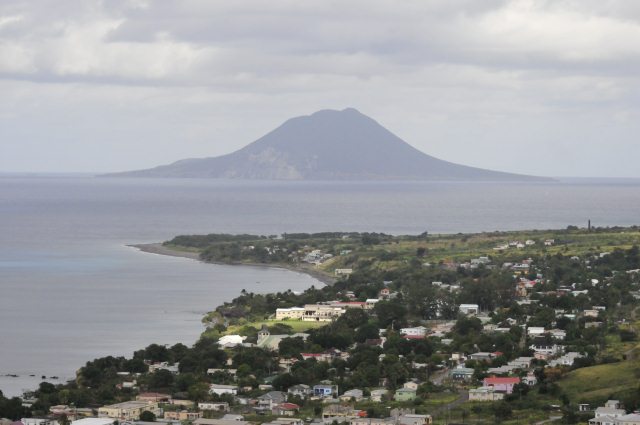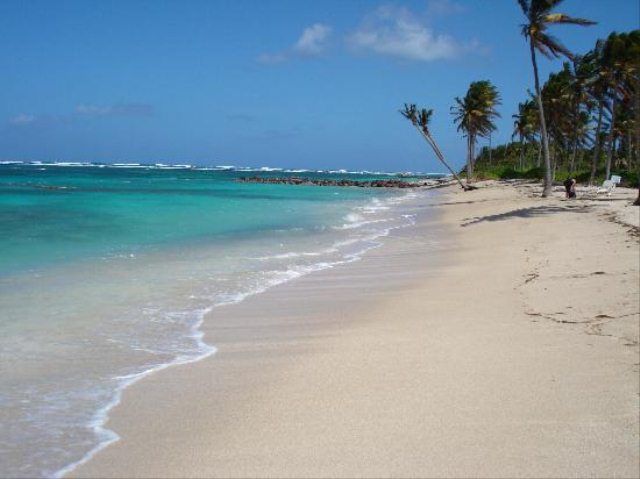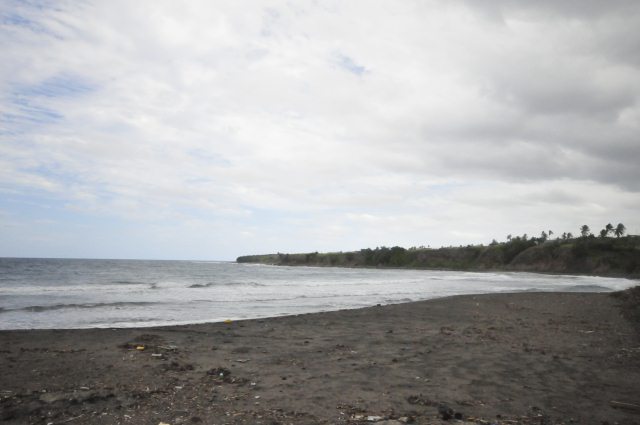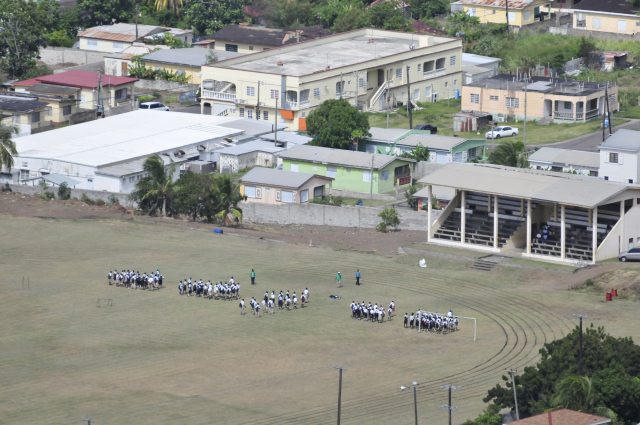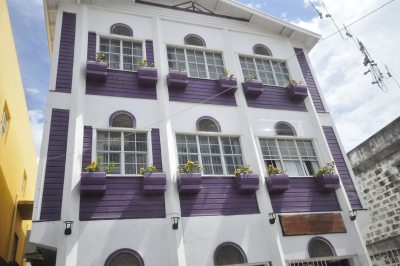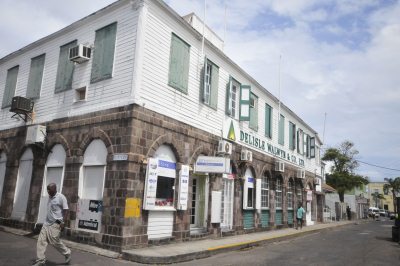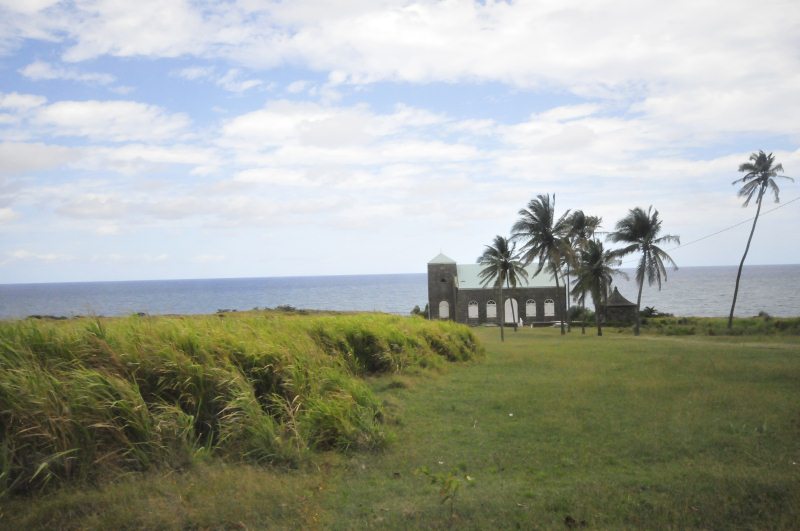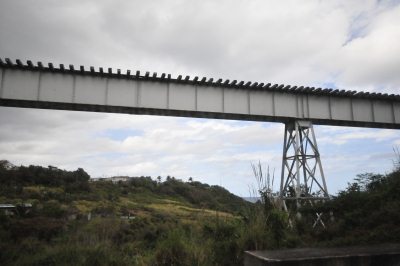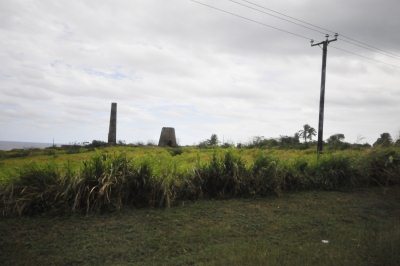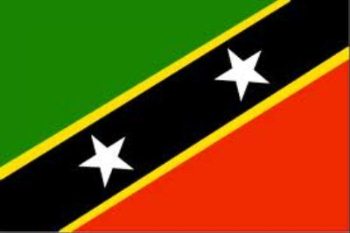|
Saint Kitts
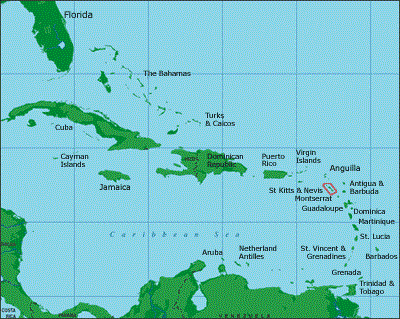
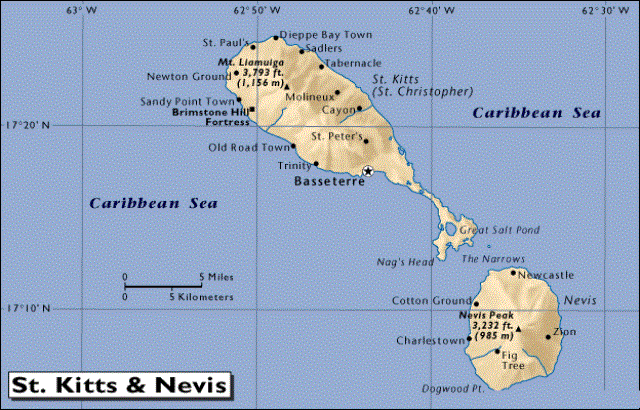
The Federation of Saint Kitts and Nevis, located
in the Leeward Islands, is a federal two-island
nation. It is the smallest sovereign
nation in the Americas, in both
area and population. The capital
city and headquarters of government for the federated state is
Basseterre on the larger island of Saint
Kitts. The smaller state of
Nevis lies about two miles southeast of Saint Kitts,
across a shallow channel called "The Narrows". Historically, the British dependency of
Anguillar was also a part of this union, which was then known
collectively as Saint Christopher-Nevis
Anguillar. Saint Kitts and Nevis were amongst the
first islands in the Caribbean to be settled by Europeans. Saint Kitts was home
to the first British and French colonies in the
Caribbean.
Etymology: Saint Kitts was
named "Liamuiga " by the Kalinago Indians who inhabited the island.
This name, roughly translated in English means "fertile land," a testimony to
the island's rich volcanic soil and high productivity.
There is some disagreement over the name which Columbus gave to St.
Kitts. For many years it was thought that he named the island San Cristobal,
after his patron saint Saint Christopher, the saint of travelling. However, new
studies suggest that Columbus named the island Sant Jago (Saint James). The name
"San Cristobal" was apparently given by Columbus to the island we now know as
Saba, twenty miles northwest. It seems that
"San Cristobal" came to be applied to the island of St. Kitts only as the result
of a mapping error. No matter the origin of the name, the island was well
documented as "San Cristobal" by the 17th century. The first British colonists
kept the English translation of this name, and dubbed it "St. Christopher's
island." In the 17th century Kit, or Kitt, was a common abbreviation for the
name Christopher, and so the island was often informally referred to as "Saint
Kitt's island," which was further shortened to "Saint
Kitts."
History: The islands of Saint Kitts
and Nevis are two of the Caribbean's oldest colonised territories. Saint Kitts
became the first British colony in the West Indies in 1624 and then became the
first French colony in the Caribbean in 1625, when both nations decided to
partition the island. Five thousand years prior to European
arrival, the island was settled by Indian peoples. The latest arrivals, the
Kalinago peoples, arrived approximately three centuries
before the Europeans. The Kalinago allowed the Europeans to colonise Saint
Kitts, while earlier attempts to settle other islands were met with immediate
destruction of the colonies by the Indians. The Kalinago were eventually wiped
out in the great Kalinago Genocide of 1626. Often overlooked in history is the fact
that in the 1600's, under Cromwell's reign, England shipped approximately 25,000
Irish to St. Kitts as slaves to work on the island. In 1629 a Spanish
expedition occupied both islands and deported the English and French habitants back
to their countries. Although small in size, and
separated by only two miles of water, the two islands were viewed and
governed as different states until the late 19th century, when they were
forcibly unified along with the island of Anguilla by the British. To this day
relations are strained, with Nevis accusing Saint Kitts of neglecting its needs.
Saint Kitts and Nevis, along with
Anguillar became an associated
state with full internal autonomy in 1967. Angullians
rebelled, and their island was allowed to separate from the others in 1971. St.
Kitts and Nevis achieved independence in 1983. It is the newest sovereign nation
in the Americas. In August 1998, a vote in Nevis on a referendum to separate
from St. Kitts fell short of the two-thirds majority needed. In late September
1998, Hurricane Georges caused approximately $445 million in damages and
limited GDP growth for the
year.
Geography: The highest peak, at 3792 feet, is
Mount Liamuiga. The islands are of
volcanic origin, with large central peaks covered in
tropical rainforest; the steeper slopes leading to these peaks are
mostly uninhabited. The majority of the population on both islands lives closer
to the sea where the terrain flattens out. There are numerous
rivers descending from the mountains of both
islands, which provide fresh water to the local population. St. Kitts also has
one small lake. It has the Caribbean
coast (above) an Atlantic coast (above), white sand, black sand and is a popular
place to get married. Many cruise ships visit every week from December to
June.
Demographics: As
of July 2000, there were 42,696 inhabitants; their average life expectancy was
72.4 years. Emigration has historically been
very high and high levels of such in the country has resulted in a continuous
decrease in the nation's population by about 25% since its peak of about 51,100
in 1960. Emigration from St. Kitts & Nevis to the
US: 1986–1990: 3,513. 1991–1995: 2,730. 1996–2000: 2,101. 2001–2005: 1,756.
Emigration from St Kitts & Nevis to the UK: The 2001 Census showed
7,091 Saint Kitts and Nevis born people in the UK, with almost 20,000 of direct
descent. The schools have a strict uniform policy. There are two medical schools
and one veterinary.
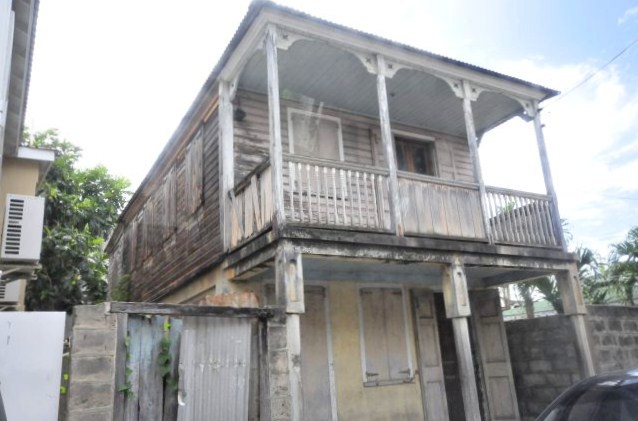
Culture: Saint
Kitts and Nevis is known for a number of musical celebrations including
Carnival (18th December to 3rd
January on Saint Kitts). The last week in June features the St Kitts Music
Festival, while the week-long
Culturama on Nevis lasts from the
end of July into early August. Other festivals on the
island of Saint Kitts include Inner City Fest, in February in Molineaux;
Green Valley Festival, usually around Whit Monday in village
of Cayon; Easterama, around Easter in village of Sandy Point;
Fest-Tab, in July or August in the village of Tabernacle;
and La Festival de Capisterre, around Independence Day in Saint
Kitts and Nevis (19th of September), in the
Capisterre region. These celebrations typically feature
parades, street dances and salsa, jazz, soca, calypso and
steelpan music.
Sports: Cricket is
common in Saint Kitts and Nevis, and is the smallest nation on Earth to ever
host a World Cup event; it was one of the host venues of the 2007 Cricket World
Cup at the national cricket ground - Warner Park.
The St Kitts and Nevis national football
team is also known as the "Sugar Boyz". The St. Kitts and Nevis Billiard Federation - SKNBF, is the governing
body for cue sports across the two islands. Kim
Collins is the country's foremost track and
field athlete. He has won gold medals in the hundred
metres at both the World Championships in Athletics, the
Commonwealth Games and at the 2000 Sydney
Olympics he was the country's first athlete to reach an
Olympic final. The road that leads to the airport is named in his
honour.
ALL IN ALL A REAL MIXTURE OF OLD AND
NEW
MORE VARIETY OF TRANQUILITY VERSES
BUSINESS
|



